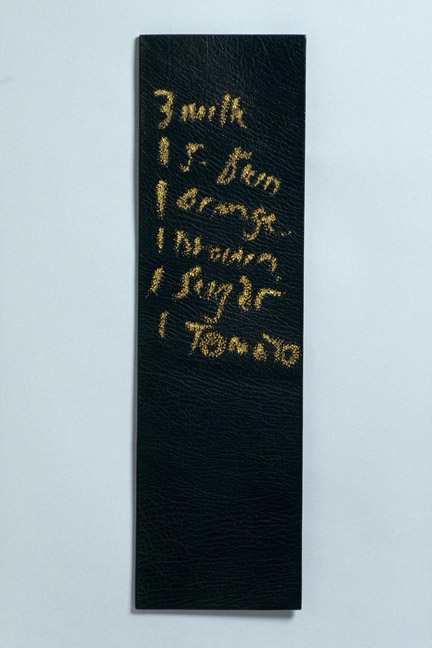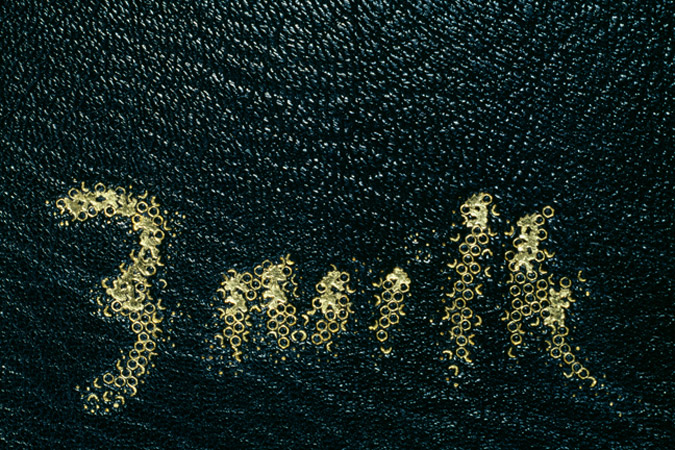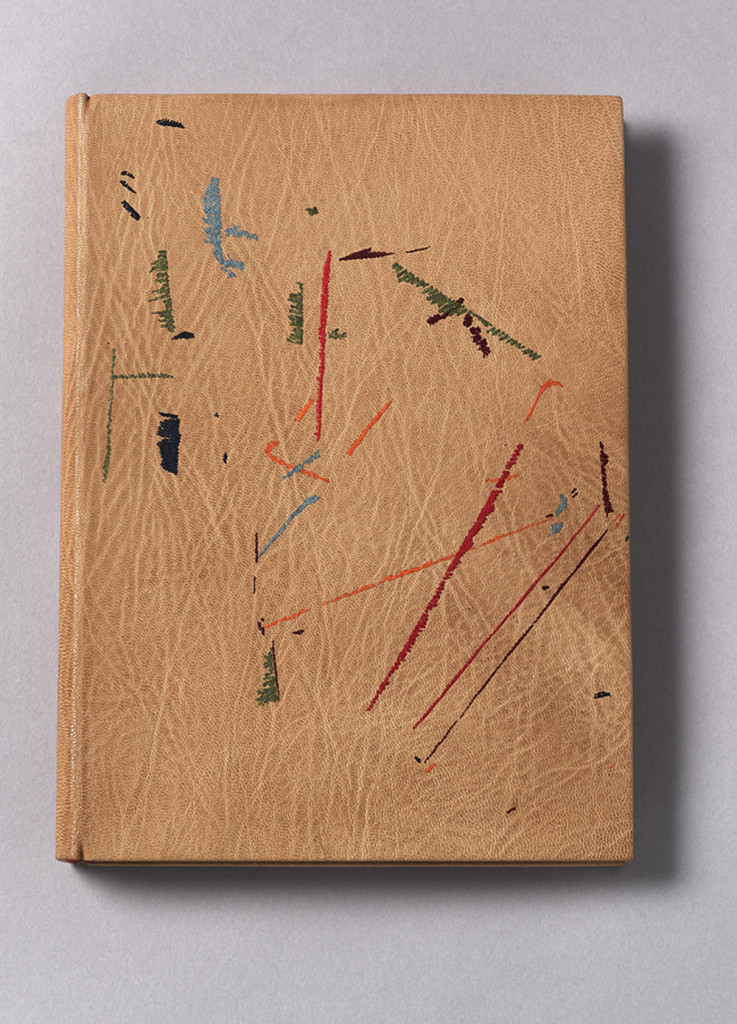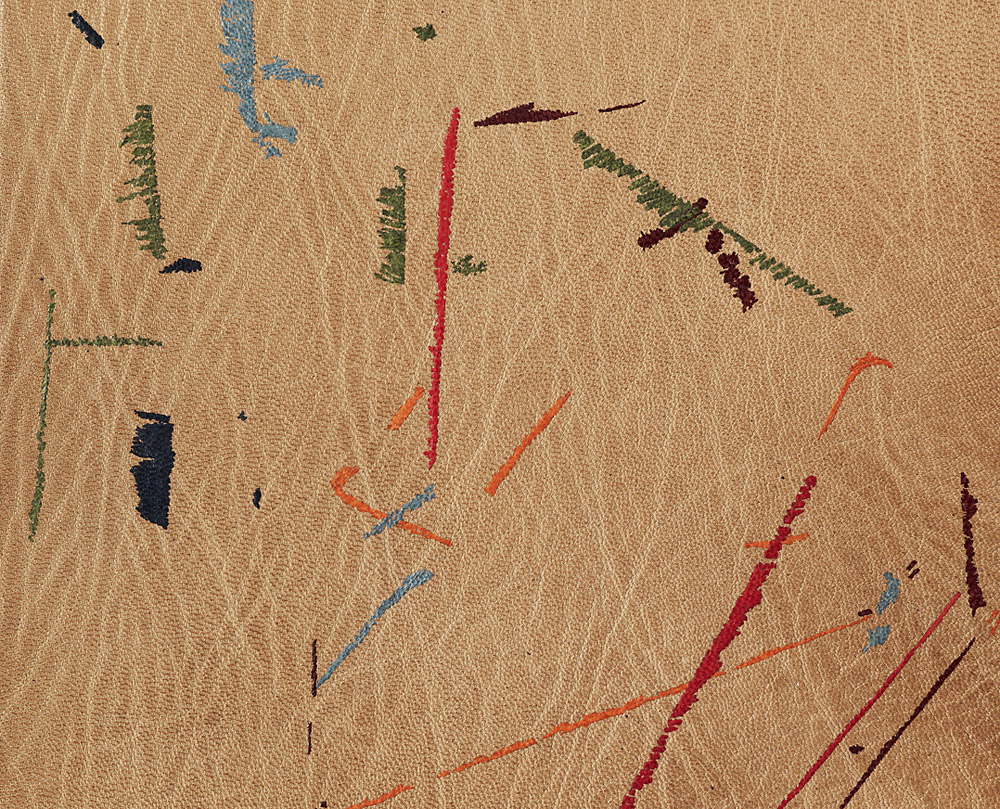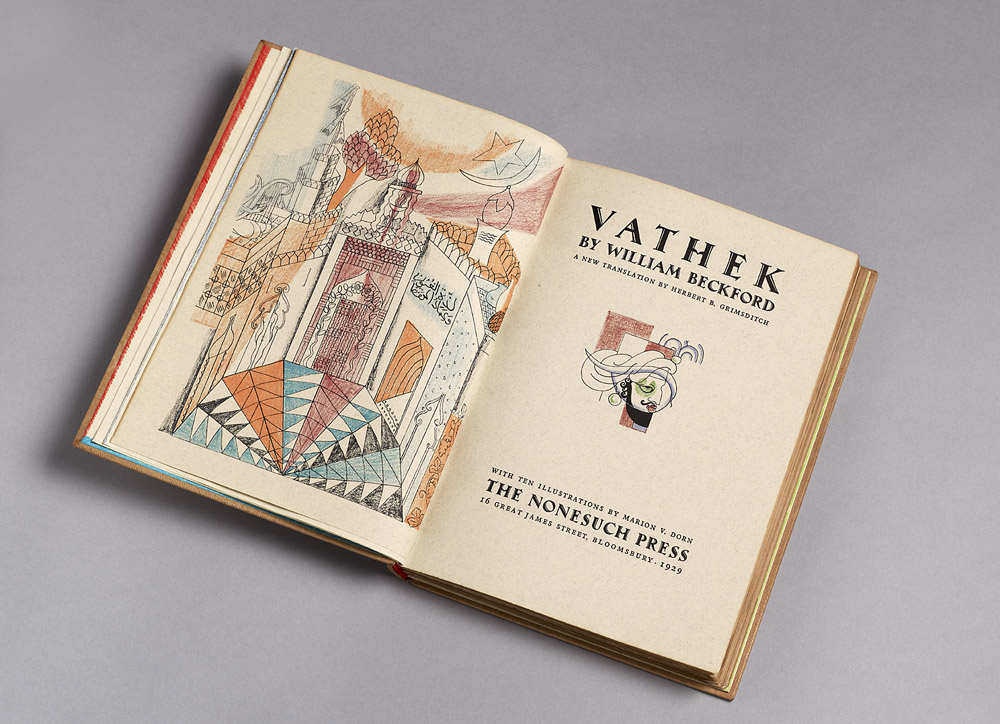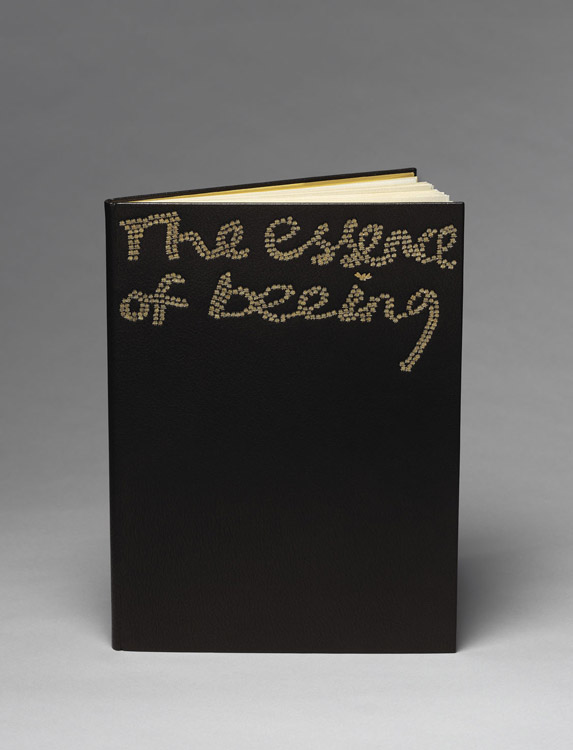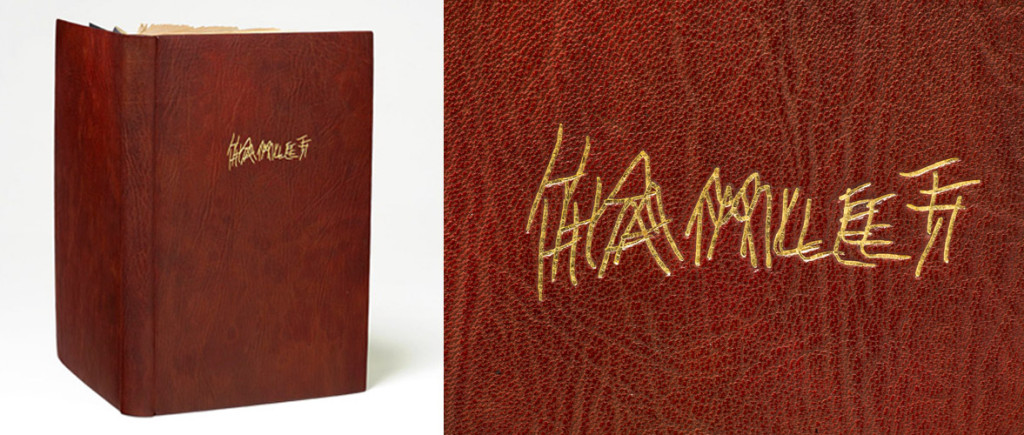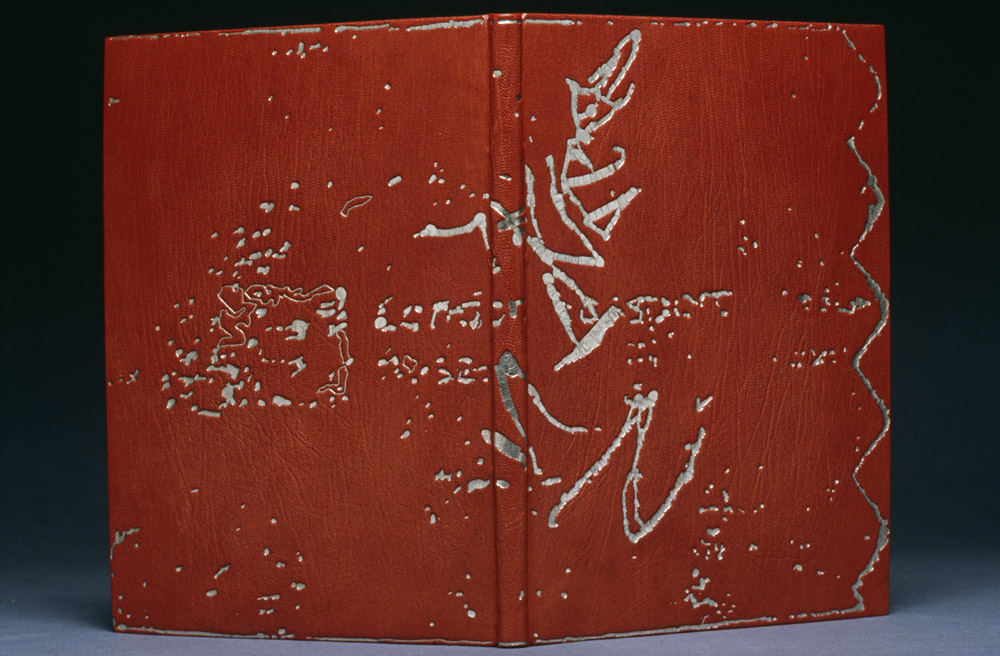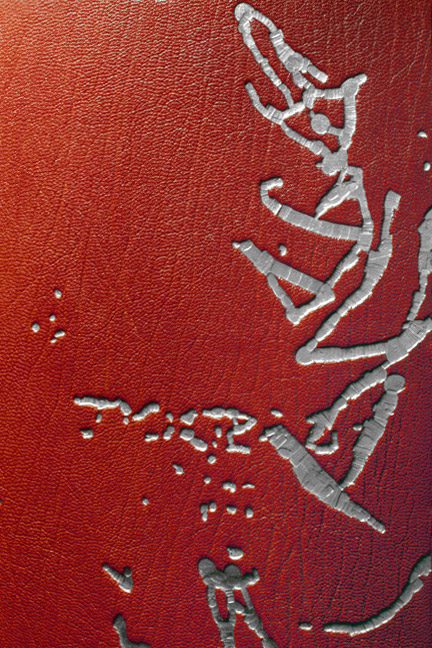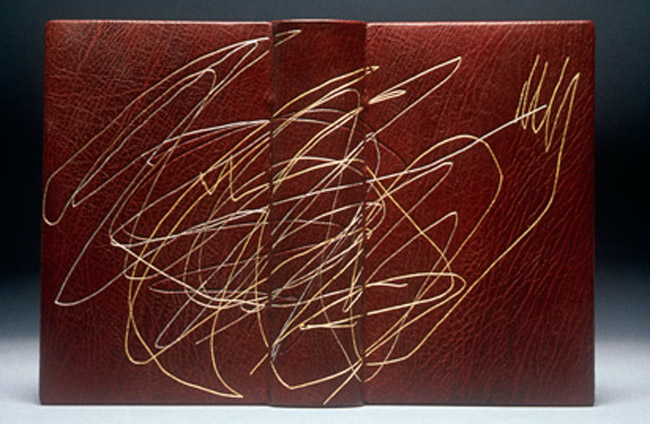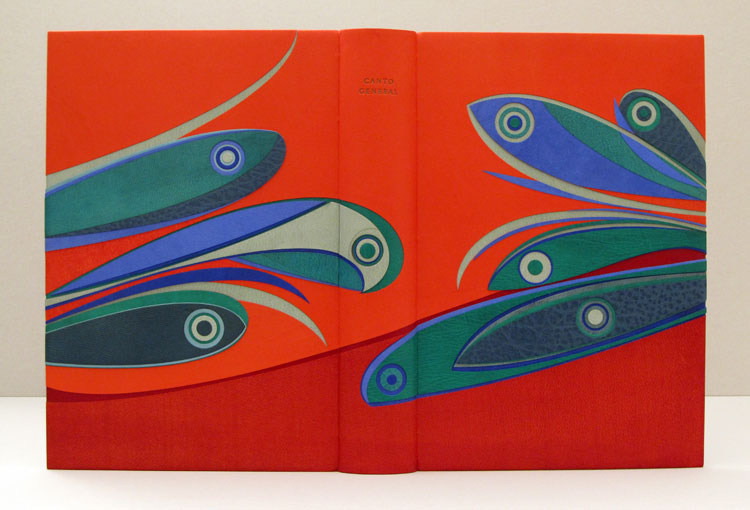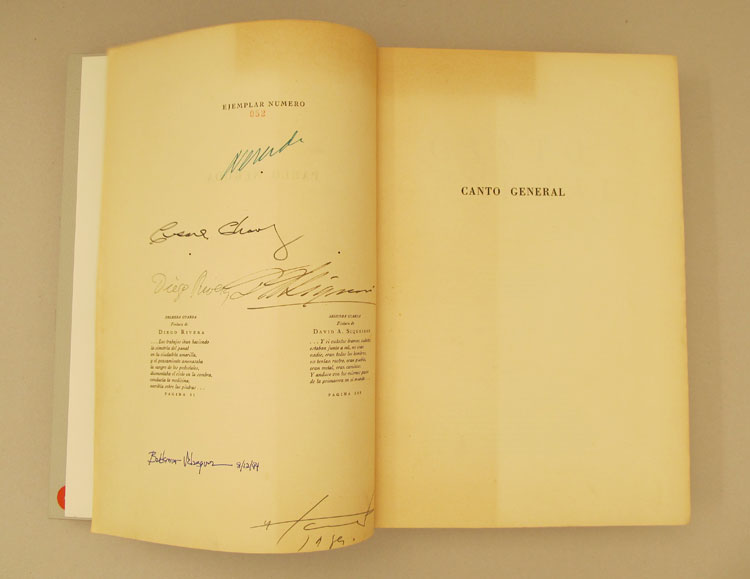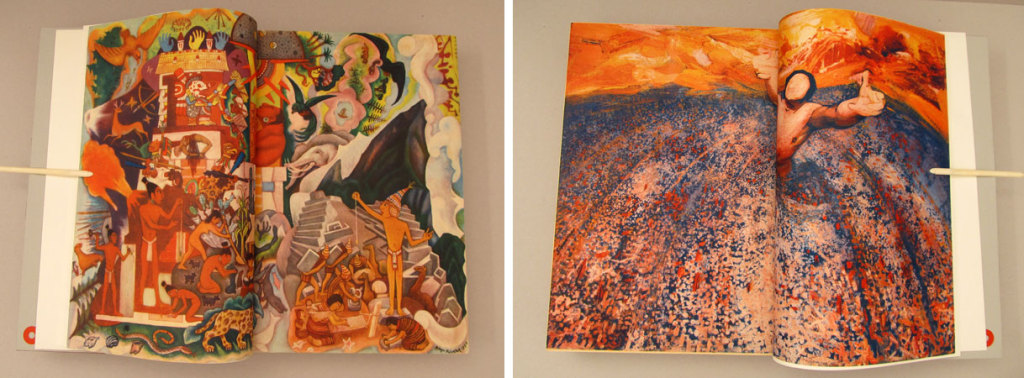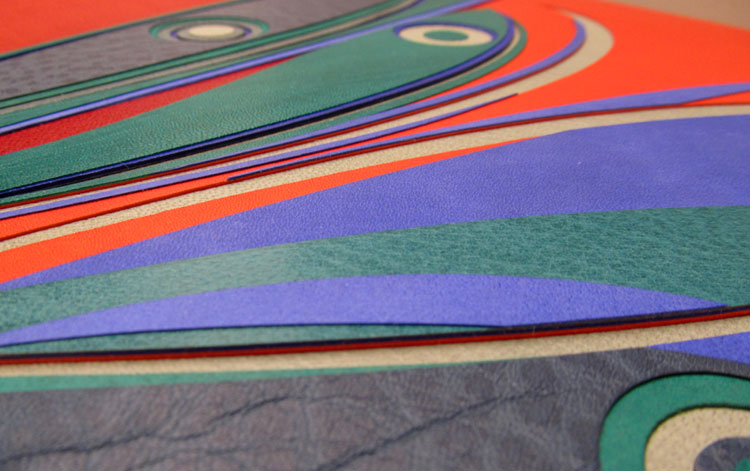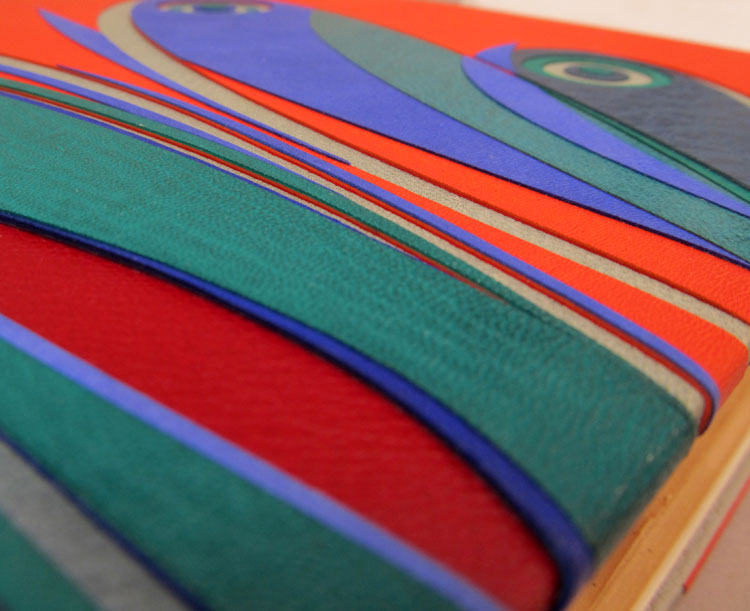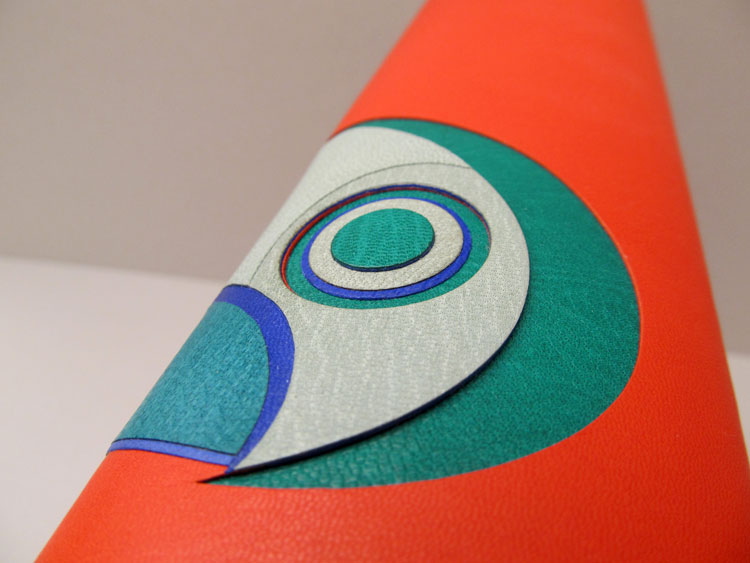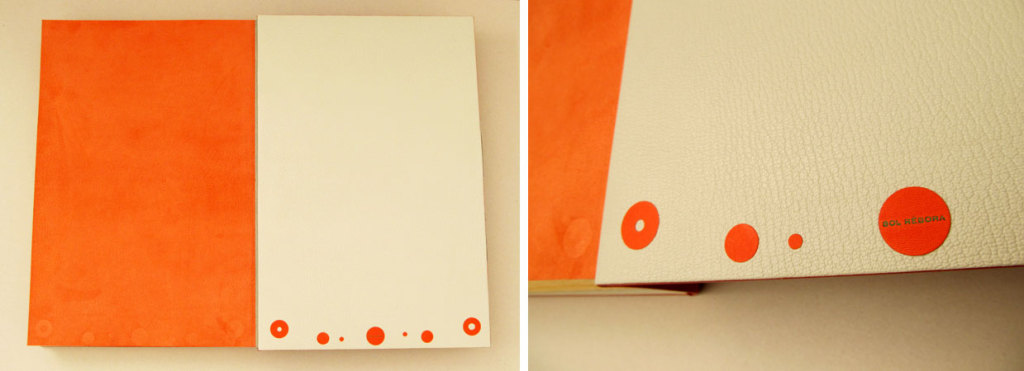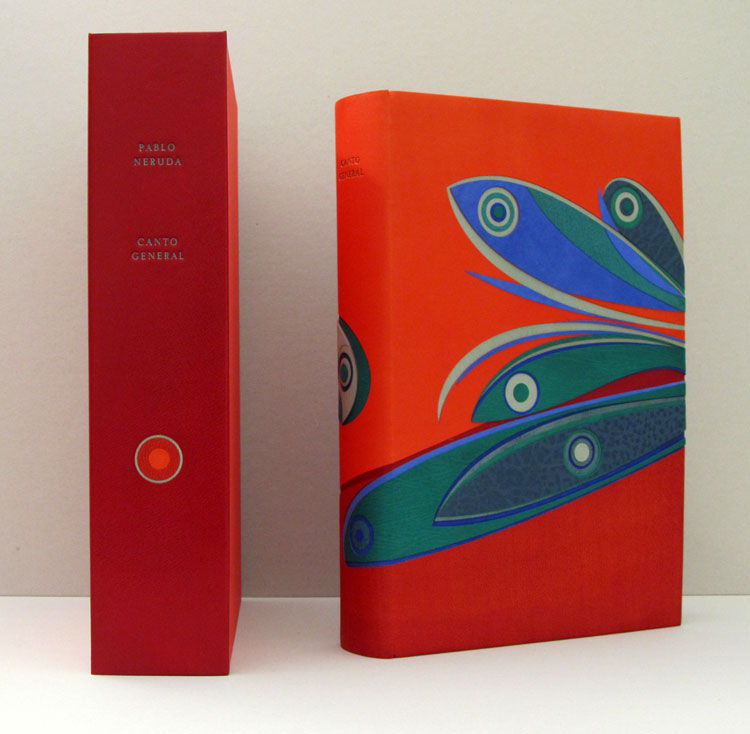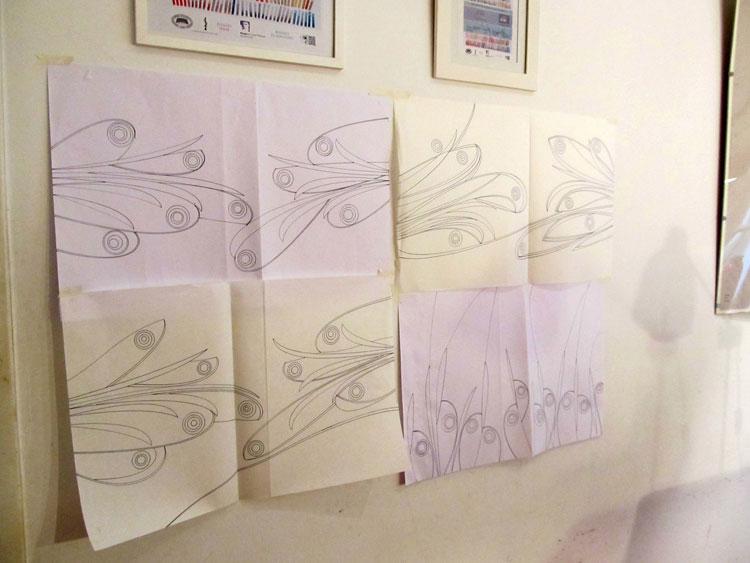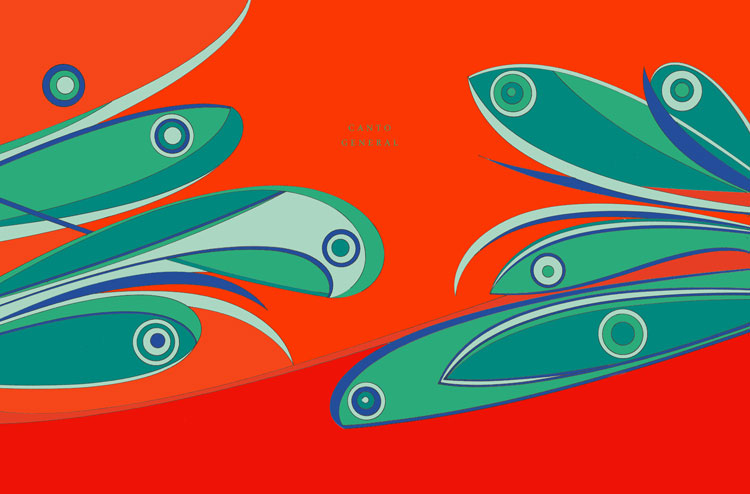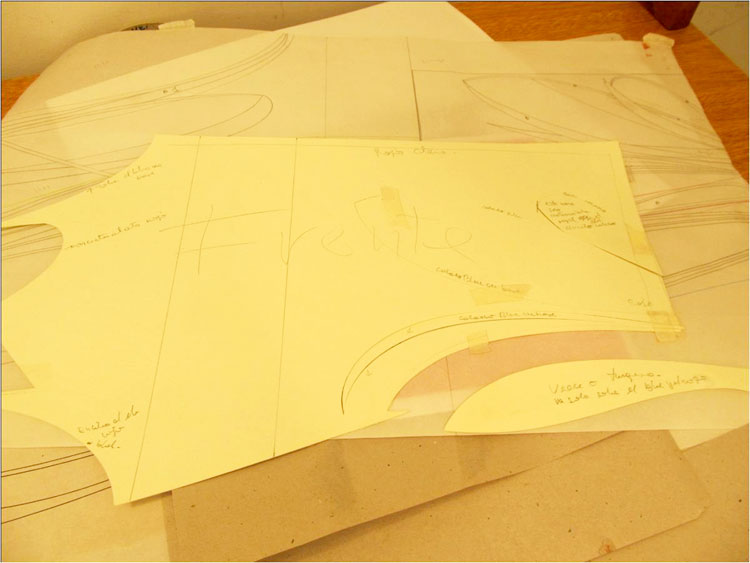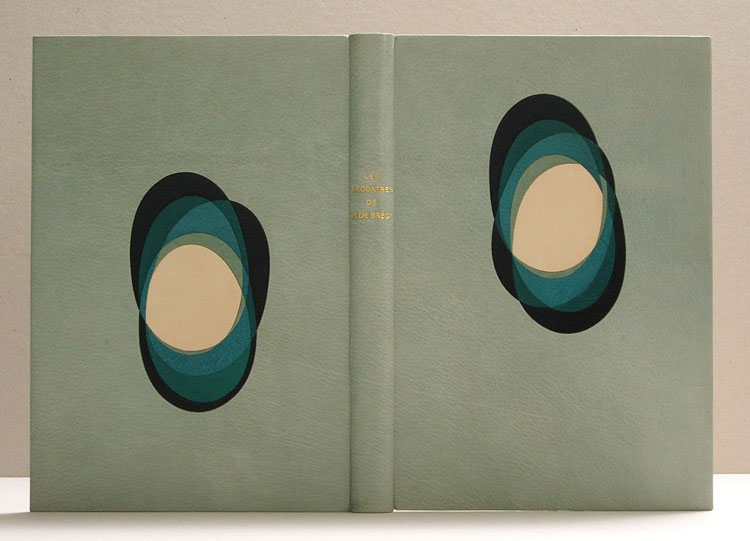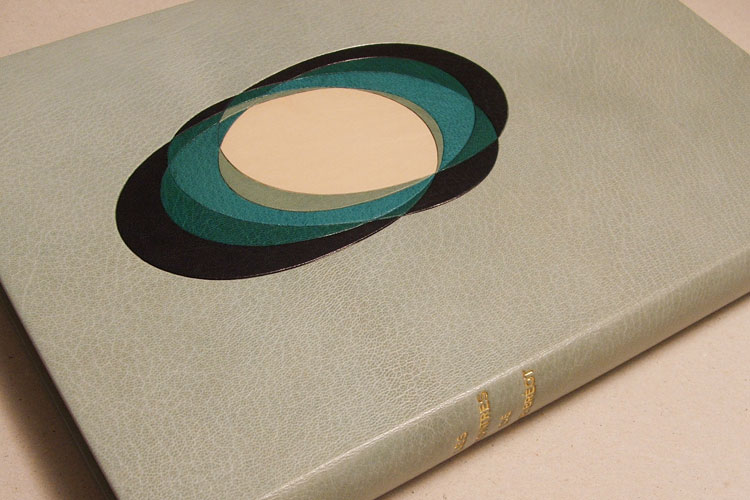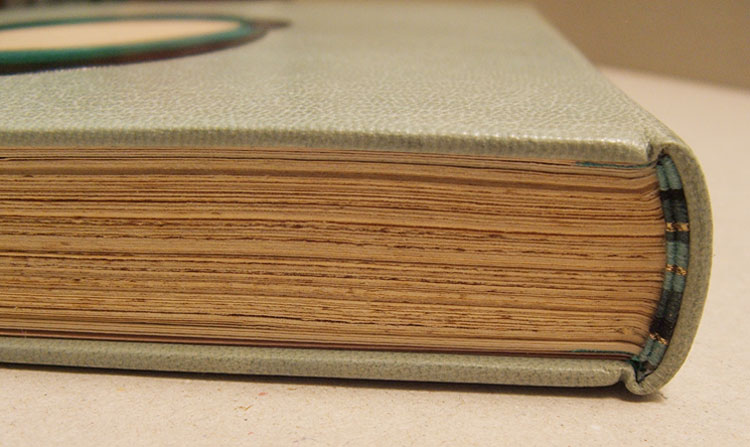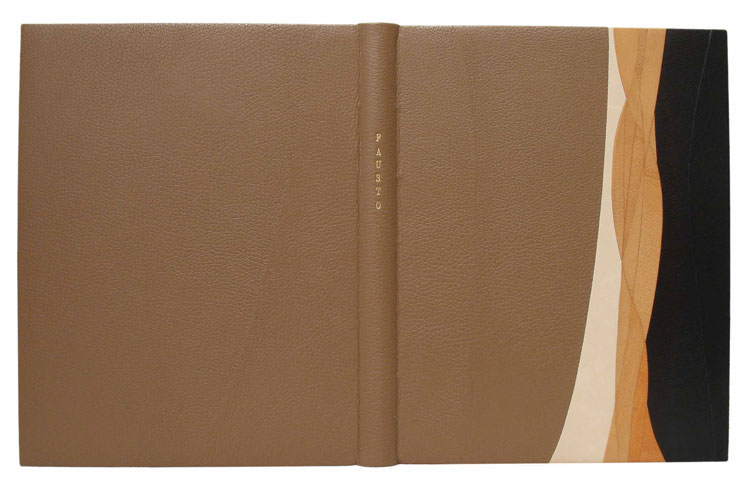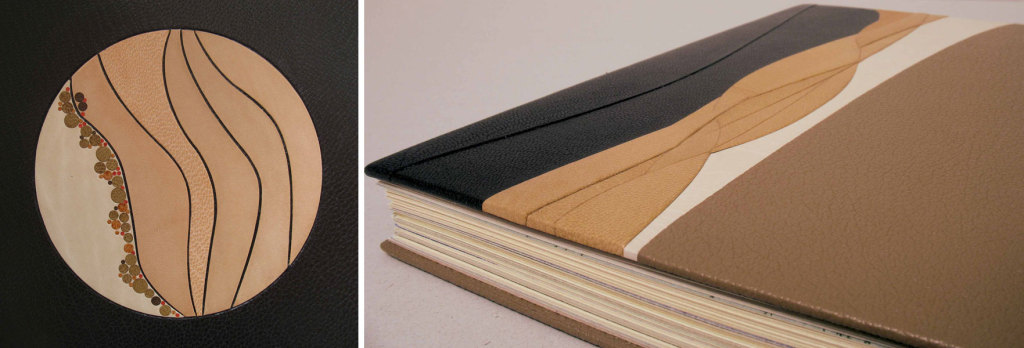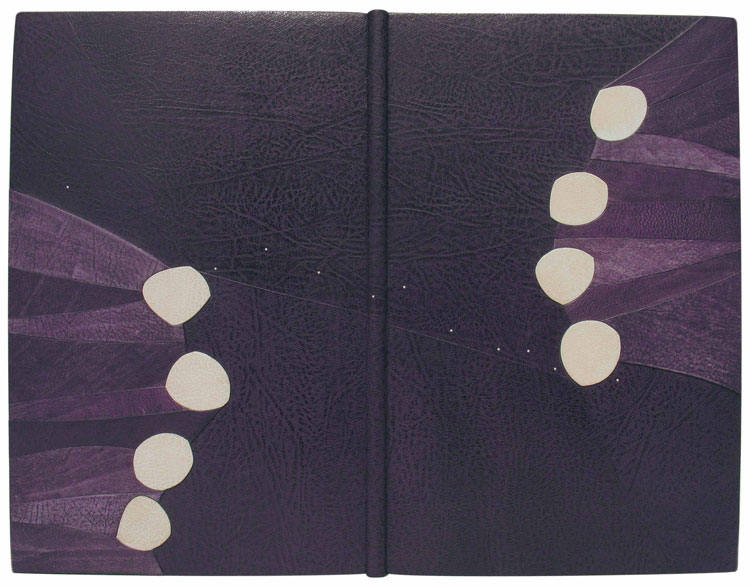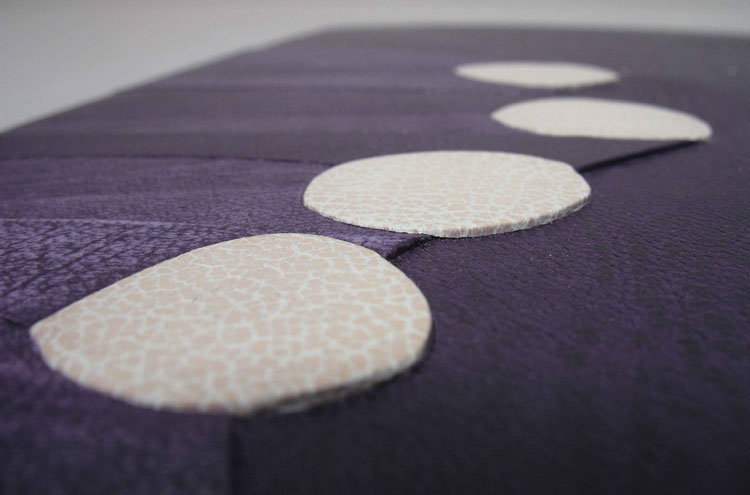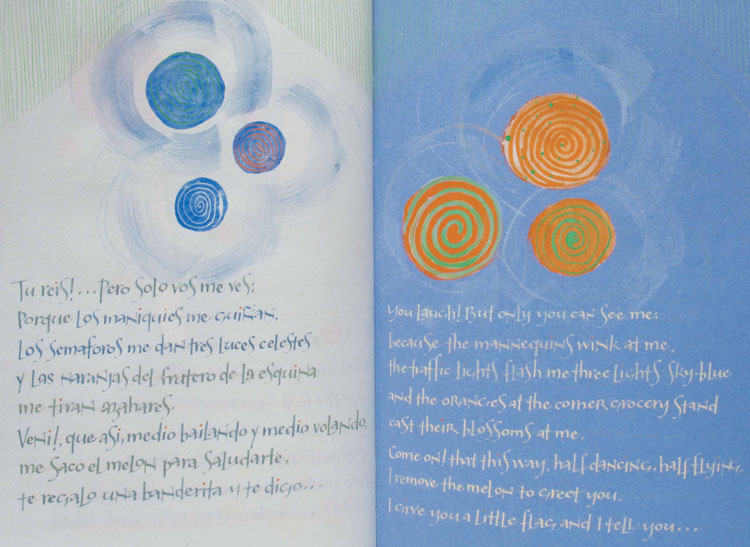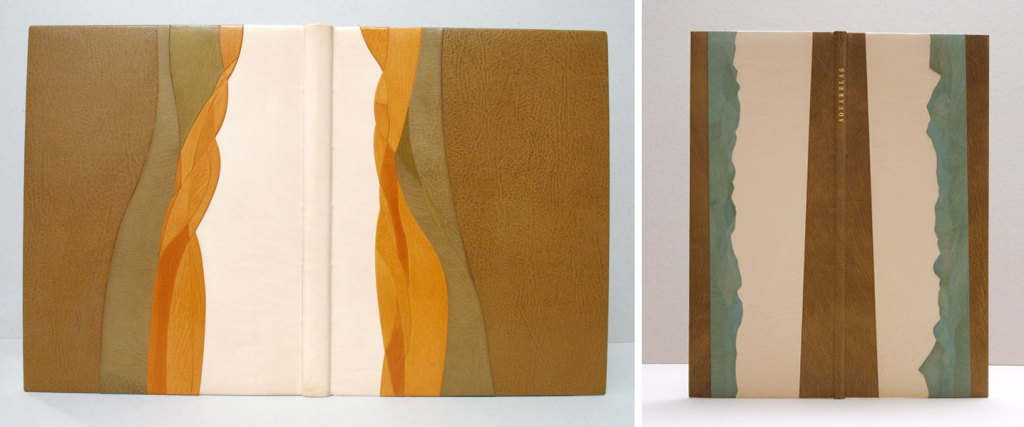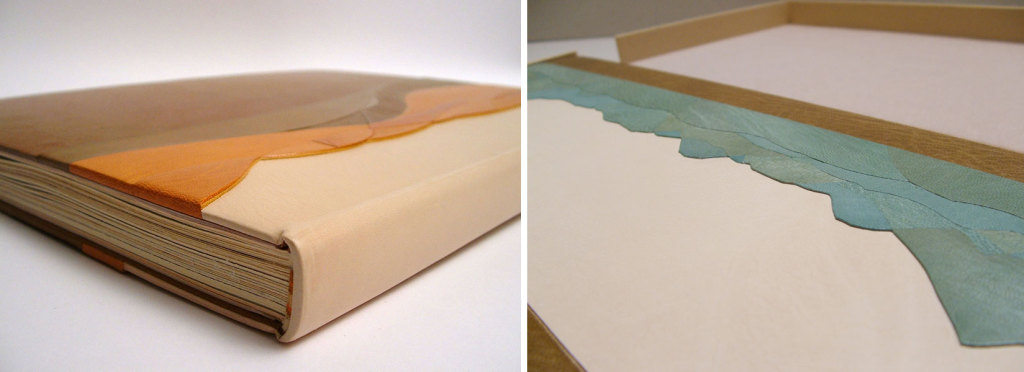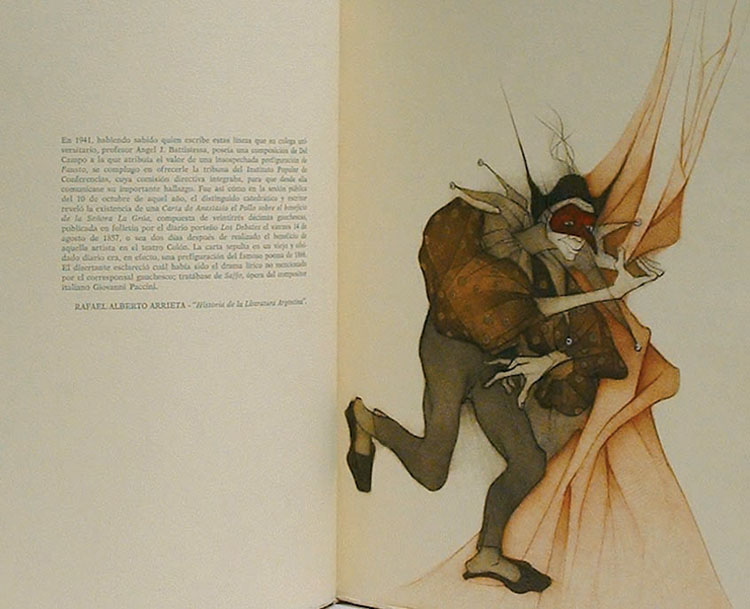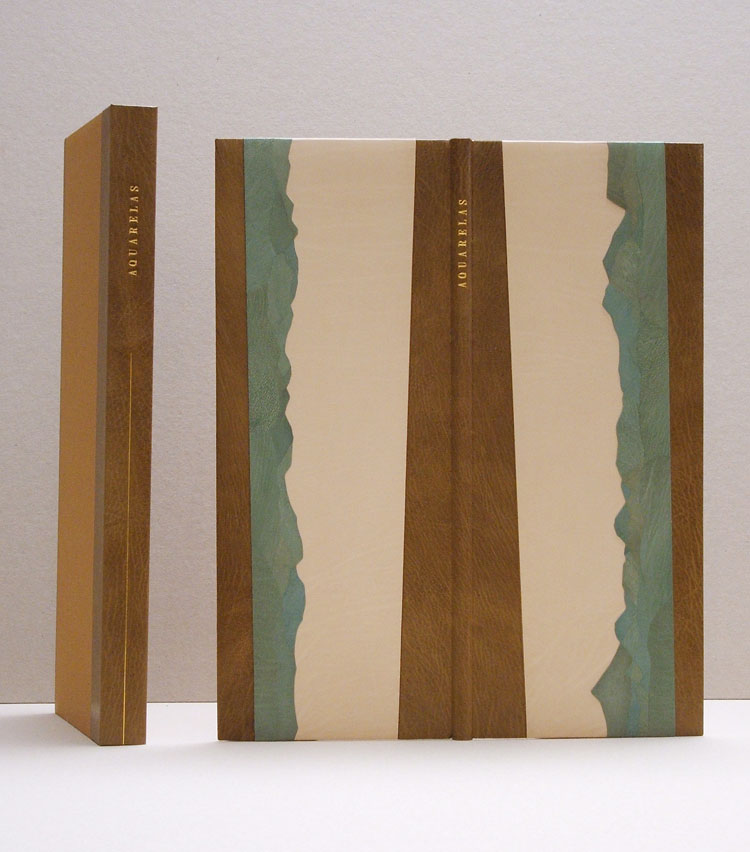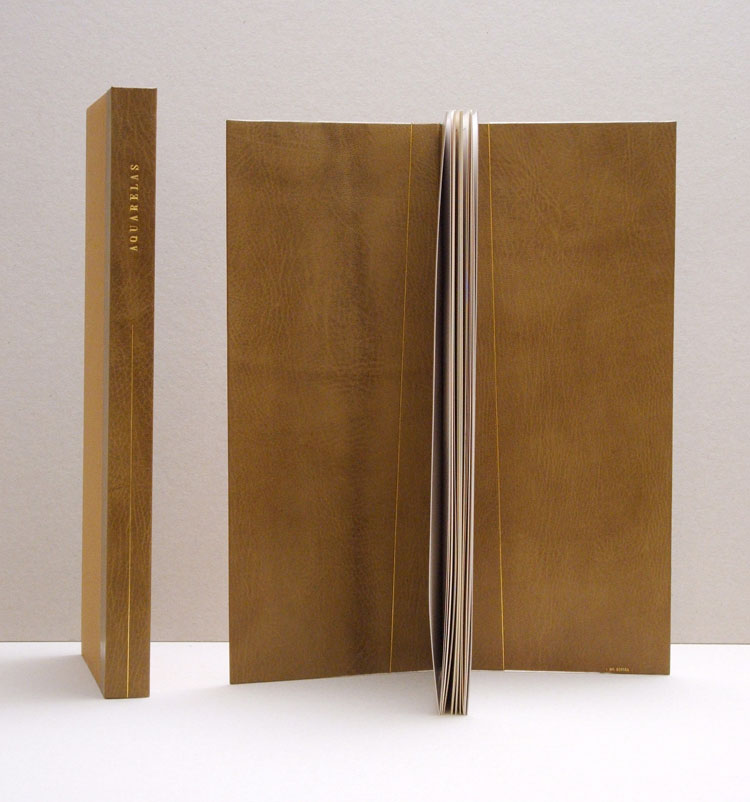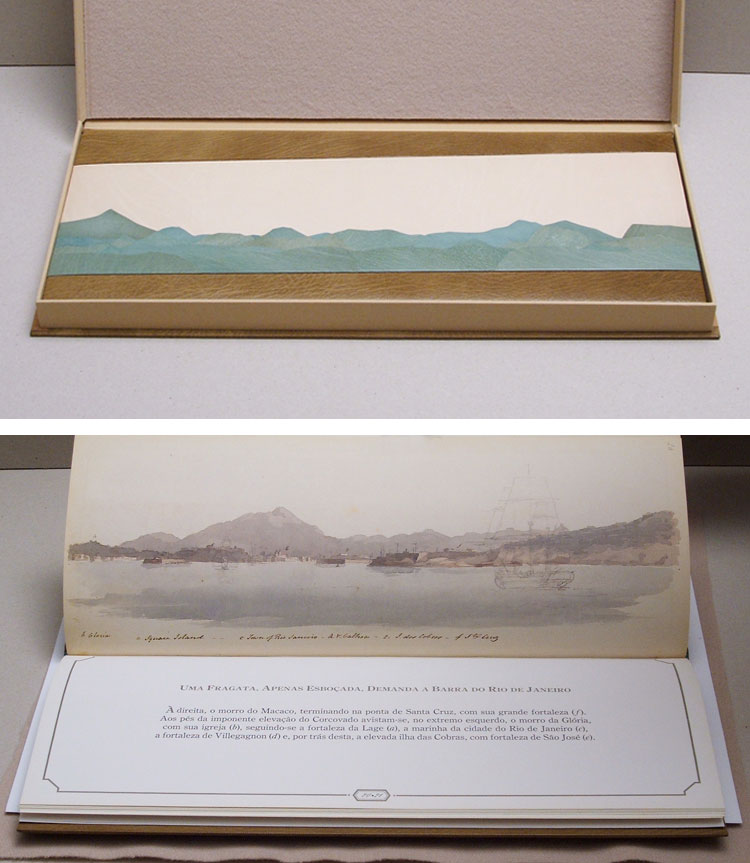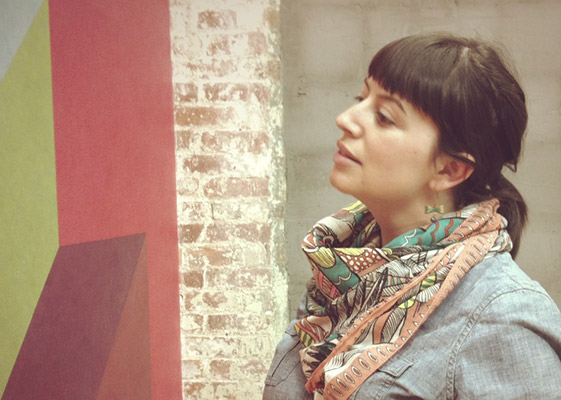So far in this interview with Tracey Rowledge we’ve looked at her binding work and her works on paper, more specifically the work inspired by markings either found or interpreted. The leather panels presented in this post are a wonderful representation of art created using traditional binding and finishing techniques. The panel above is called 3 Milk and was created in 2000; the panel is covered in black goatskin with gold tooled design. The detail of this panel will awe you and make you think about tooling combinations differently.
Many of your leather wall panels are tooled representations from found paper scraps with markings. The gold tooled marks that decorate your fine bindings appear spontaneous. Are you creating these free-form designs in response to the work being bound or do they come from found paper scraps?
It’s a mixture. Sometimes I found I had the exact response to a book in my ‘found archive’, other times I set about creating images for a book myself, as time went on the latter was more and more the case. Sometimes though a found image was so strong a driving force that I felt I needed to make a piece of work with it that wasn’t a book. In these instances, the materials and decorative techniques I used and the proportions of the wall piece would all be guided by the original scrap of paper I’d found. Really, what I’m describing is that I created a framework for these pieces of work, whereby the decisions were half made by the found material itself.

LEFT: Where, covered in mid-blue calfskin, gold-tooled, 2003 RIGHT: Diptych, covered in baby pink goatskin with grey goatskin recessed inlays, 2000

LEFT: Buff, covered in turquoise goatskin with leather inlays, 2004 RIGHT: Fidget, stretched native red goatskin, tooled in carbon, 2004
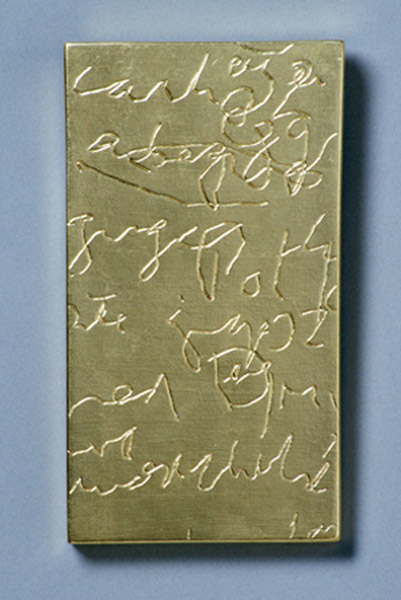
Cash, gilded gesso panel on wood, 2005
